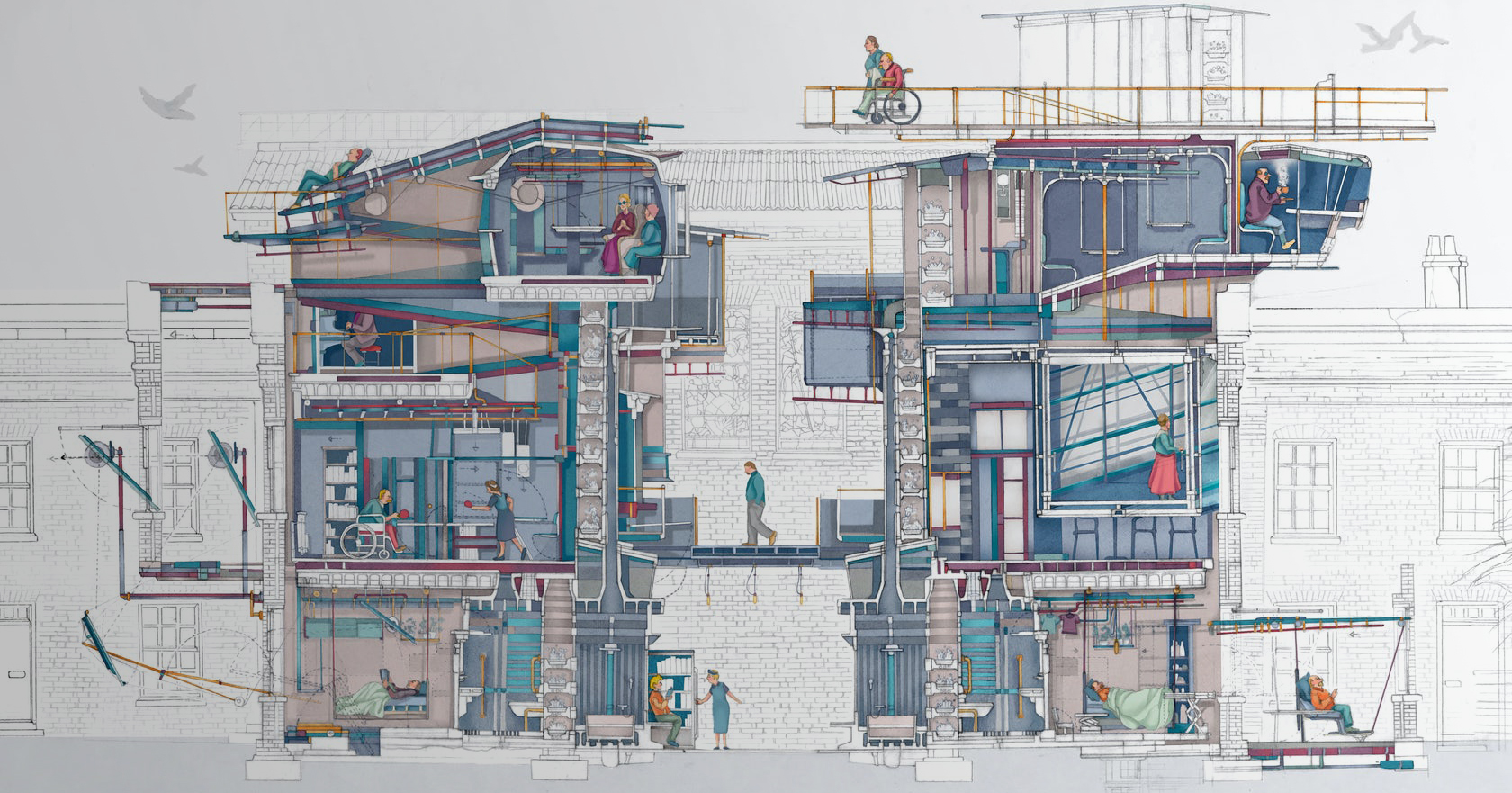The jury's votes are in — Architizer is proud to present the winners of the 2025 Vision Awards! Join the program mailing list and continue celebrating the world's best architectural representations by clicking here.
Visually alliterative and amply opulent, Fala Atelier’s collages set the standard for millennial chic and helped three 25-year-old architects stake out a practice now ranked among the top 50 globally by Dezeen, with almost 100k followers on Instagram. Fittingly for a firm founded in the now-doomed Nakagin Capsule tower in 2013, Fala’s collages are brimming with a wide-range of citations — from 20th century painters like Hockney and Hopper to more conventional architectural references Boullée and Superstudio. Concrete roofs, repeating patterns, and fruit banquets abound, rivalling the otherworldly opulence of the Dutch still life genre.
If the flatness and bright colors of Fala’s collages bring to mind colorful and carelessly optimistic tech design, you’re not alone. An apartment collage by the firm was the lead image in Molly Fischer’s NY Mag piece titled, “The Tyranny of Terrazzo: Will the Millennial Aesthetic Ever End?” And Fala’s style has been lambasted by others as Airbnb-esque. The proliferation of faux terrazzo, kitchen marble, and loopy lights certainly places Fala at the center of millennial architectural sensibilities; however, much of this critique pins design with the responsibility for larger social and economic transformations that architecture is tied to.
Apart from its association with the prevailing aesthetics of our tech overlords, collage is on the rise in architecture for a variety of reasons. It represents a way of thinking about buildings between hyper-realistic renderings and standard models, and can easily be illustrated with a tablet. In combination with a plan, collage contextualizes space thoughtfully and seeks to articulate an intention and personality. The resulting apartment interiors (most of Fala’s work is residential) are an aspirational dreamscape of the design class, filled with sensual figures, manicured monstera, and the occasional giraffe, parrot or cat.
In a previous interview with Architizer, fala summarized the tension between collage and plan:
“Collages are impressionist expressions, drawings are frozen rhetorics. Images have feelings, drawings are rational — unbearable sometimes in their seriousness. Imprecise and speculative images are thus stronger tools than closed, photorealistic representations. Their uncertainties generate a necessary limbo: They create a distance to reality.
Collages quote, steal and combine references while searching for beauty in a blunt and naïve way. Mistakes become valuable and fascination arises from the visual construction, from the manipulation of fragments in a world dense of references. Intellectual in intention, they are a fragile and humble portraying exercise, the marriage of architecture’s rationality with the inconsistent beauties of reality.”
That’s not to say that the projects themselves are as naïve as the firm claims. Constant citations reveal the firm’s grounding in architectural history and theory and moments like a corner reflection of stacked glass blocks and extended curved walls are particularly refined. On a sensory level, these layers of collage feel like a natural medium for the firm’s projects that primarily consist of renovations.
Like pieces of paper in collage, or the ubiquitous marble in their designs, Fala’s interventions are a veneer on a broader urban fabric. Everything is new. Designs are playful, but never messy, especially in comparison to the chaotic exurban development of past economic booms.
Unlike the drawing-within-the-lines feel of collage, fala’s website is blissfully erratic. Clicking on an image does not simply generate a larger version. Rather, it strikes a rabbit hole of projects that play with the same motif — tiles, slightly off-centered circles, stepped pyramids. Each is completed with a poetic description at the bottom of the page. A coherent chronological order for projects? Impossible. Text is an integral part of fala’s appeal. While some projects wear baroque names: small house with a monumental shower, apartment on a mint floor, others embrace functional simplicity: real estate agency, flagship store.
Fala’s use of collage has been undeniably influential and helped to define a prevailing stylistic preference, contributing to the increased use of collage in architecture. However, much of the growth in collage appears largely to be tied to residential commissions, conveying an intimacy — with foods, pets, and carefully curated design products — that is desirable to boutique apartment buyers, but with potentially less advantage in a broader variety of commissions.
The jury's votes are in — Architizer is proud to present the winners of the 2025 Vision Awards! Join the program mailing list and continue celebrating the world's best architectural representations by clicking here.
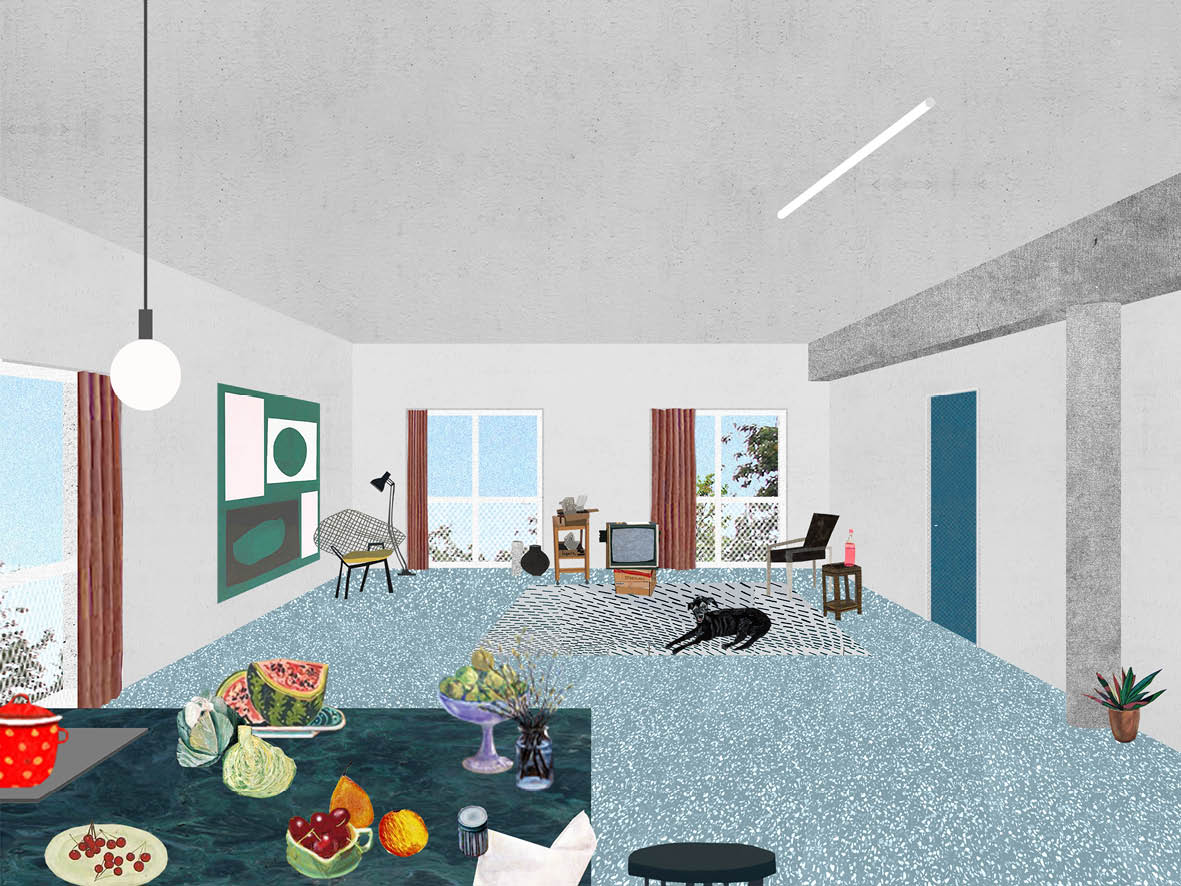
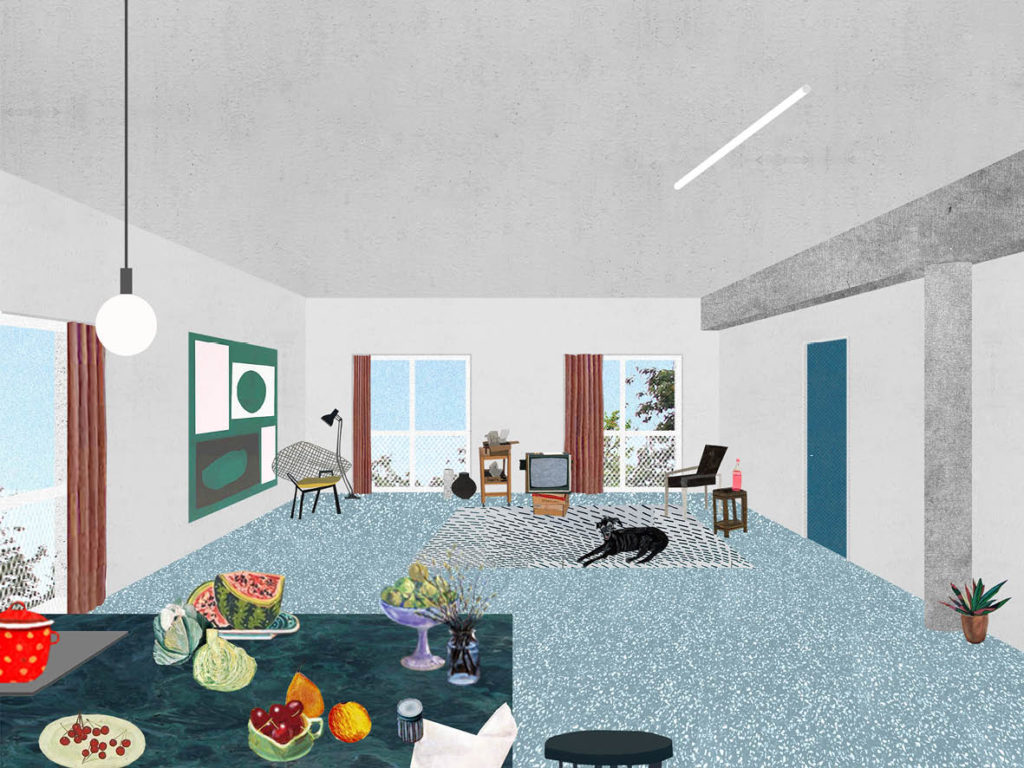
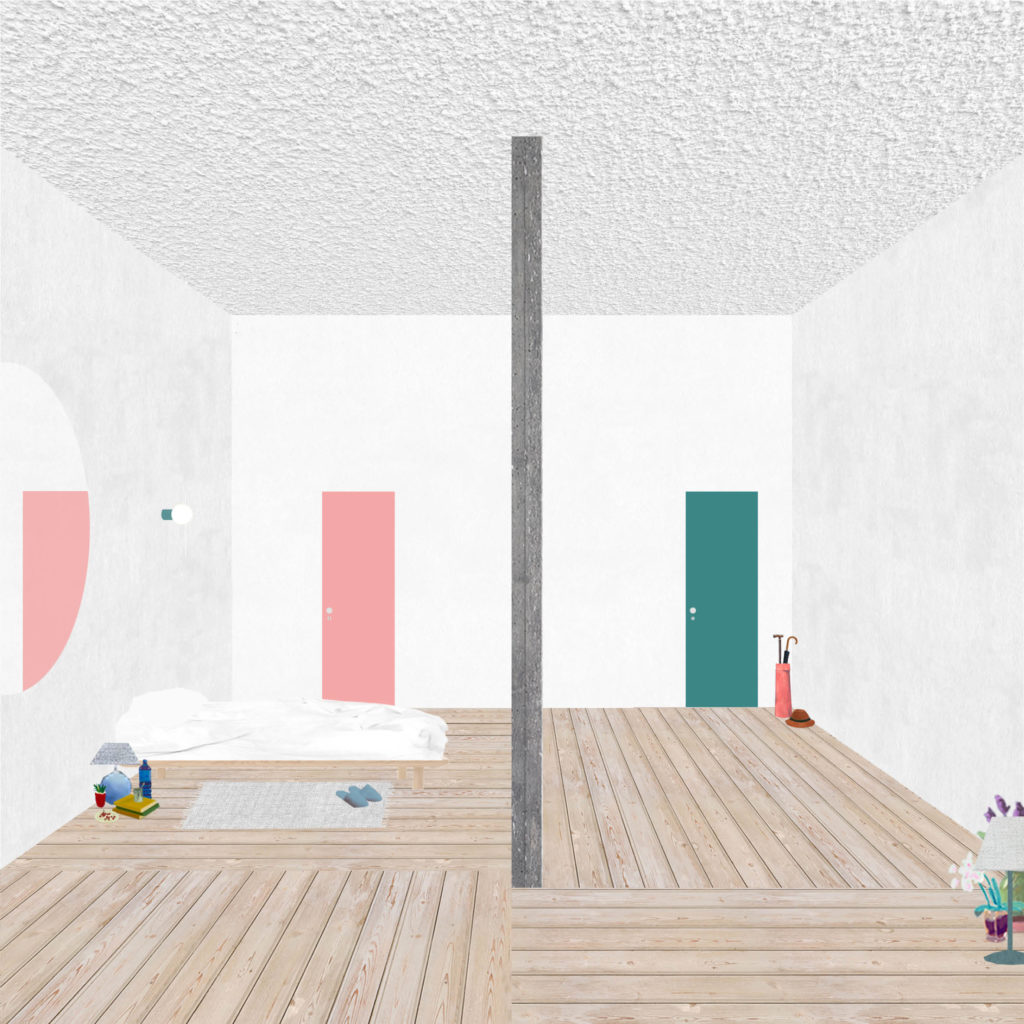
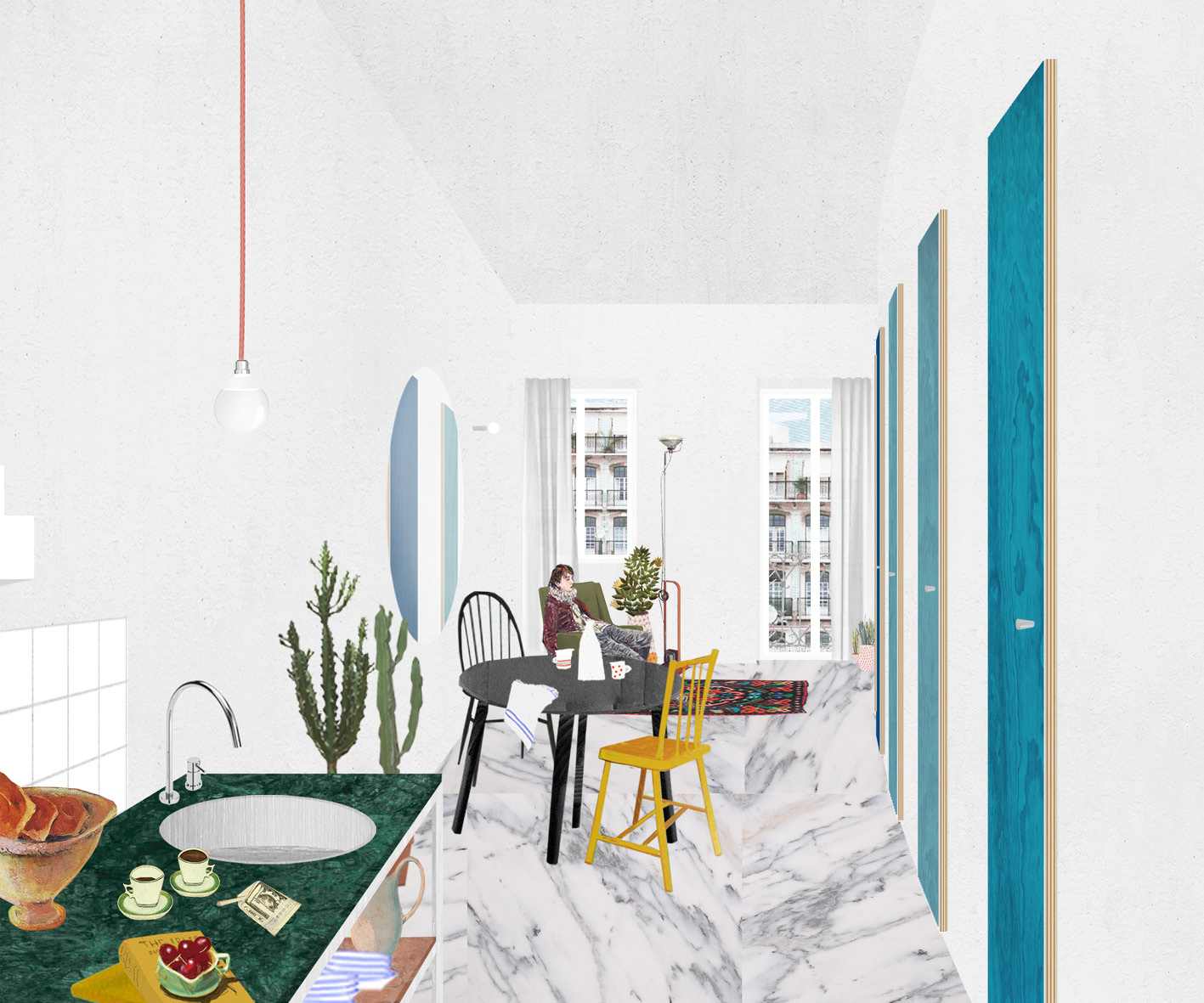
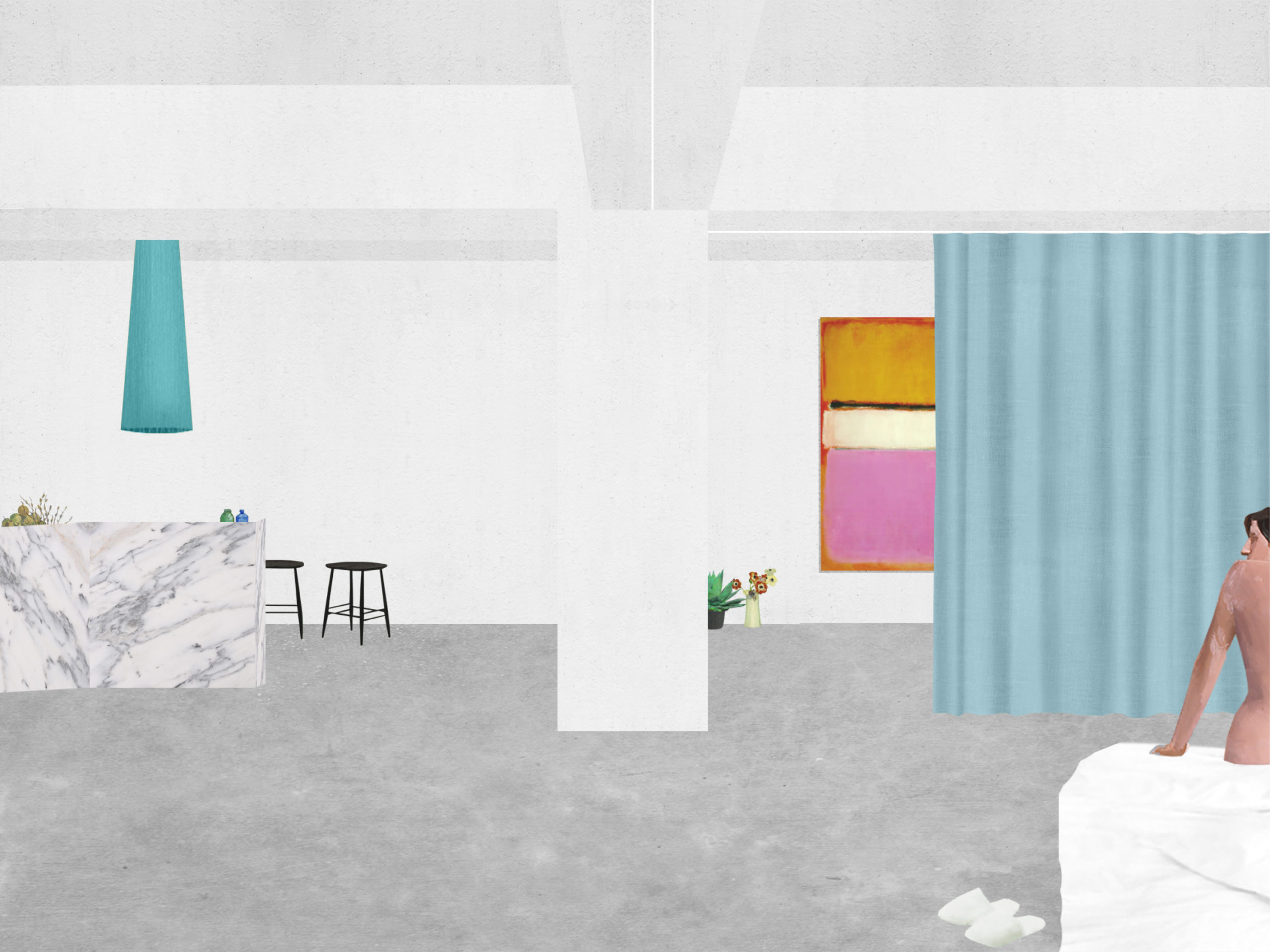
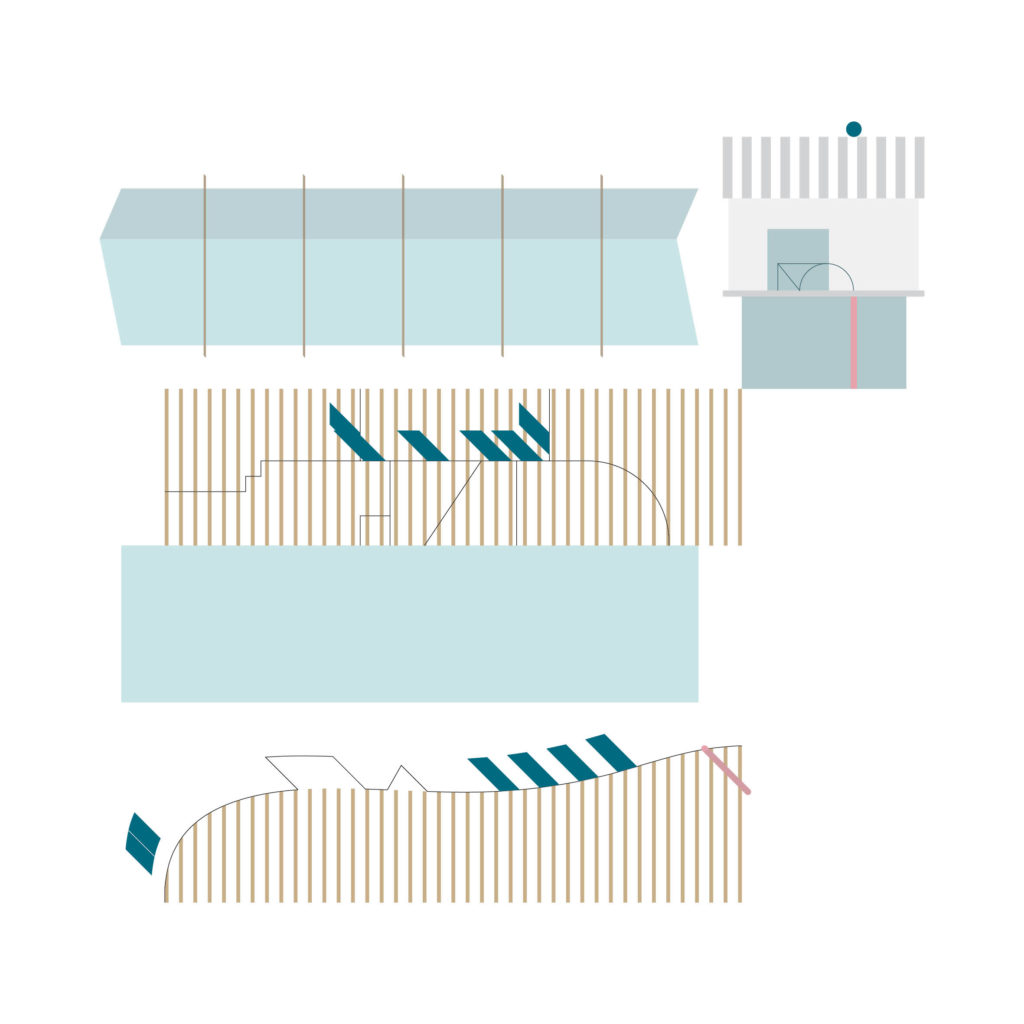
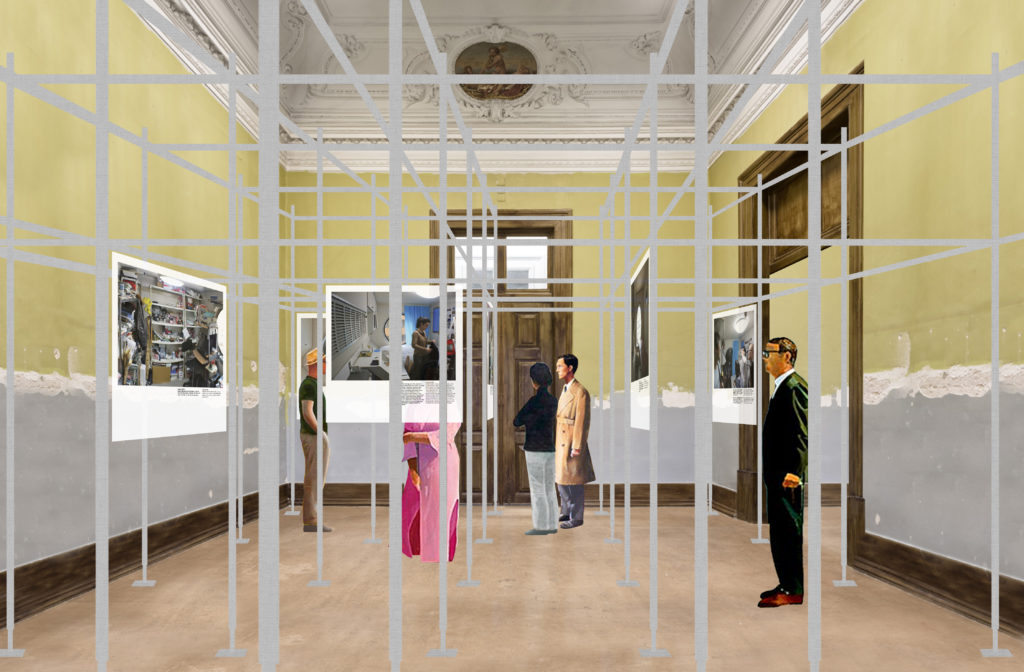
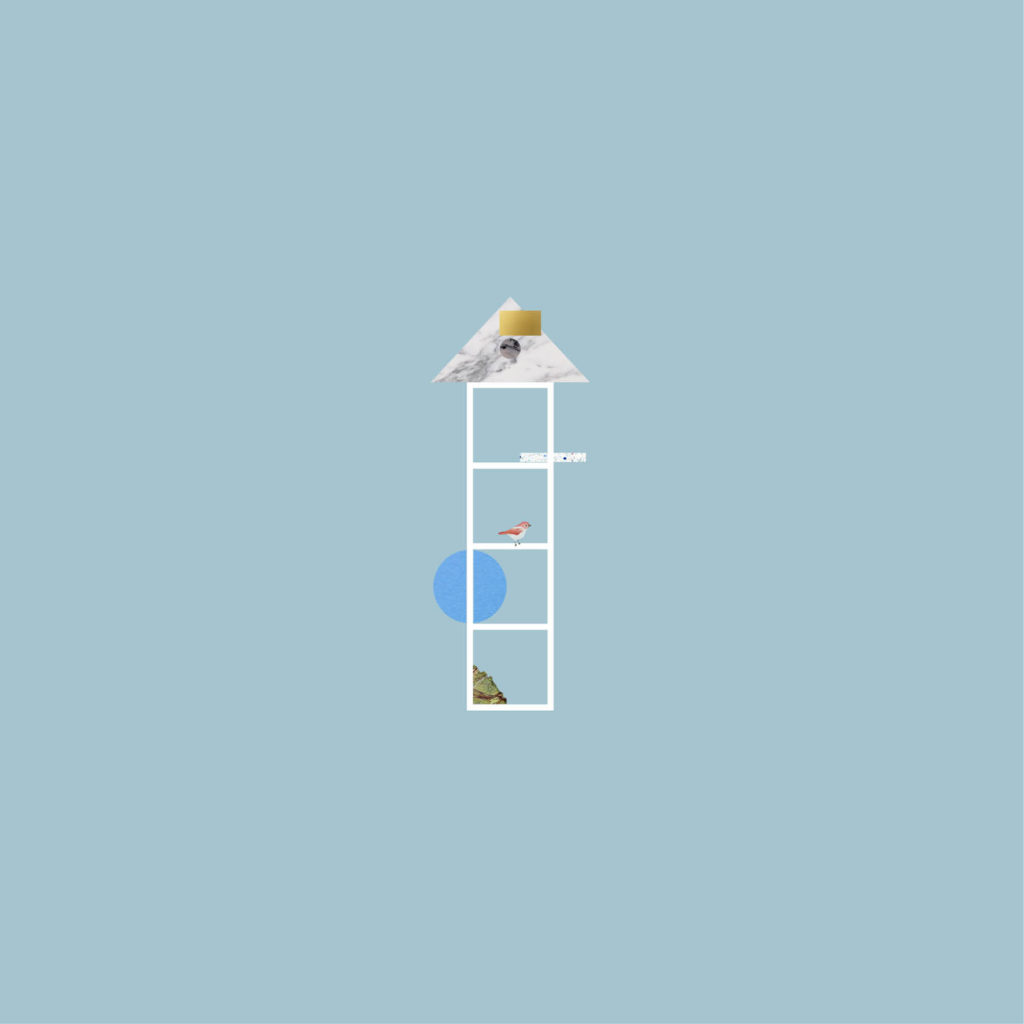
 a house for a bird
a house for a bird  anticlimax: a report on the metabolist dream
anticlimax: a report on the metabolist dream  chiado apartment
chiado apartment  garage house
garage house  graça apartment
graça apartment  housing abragão
housing abragão 
